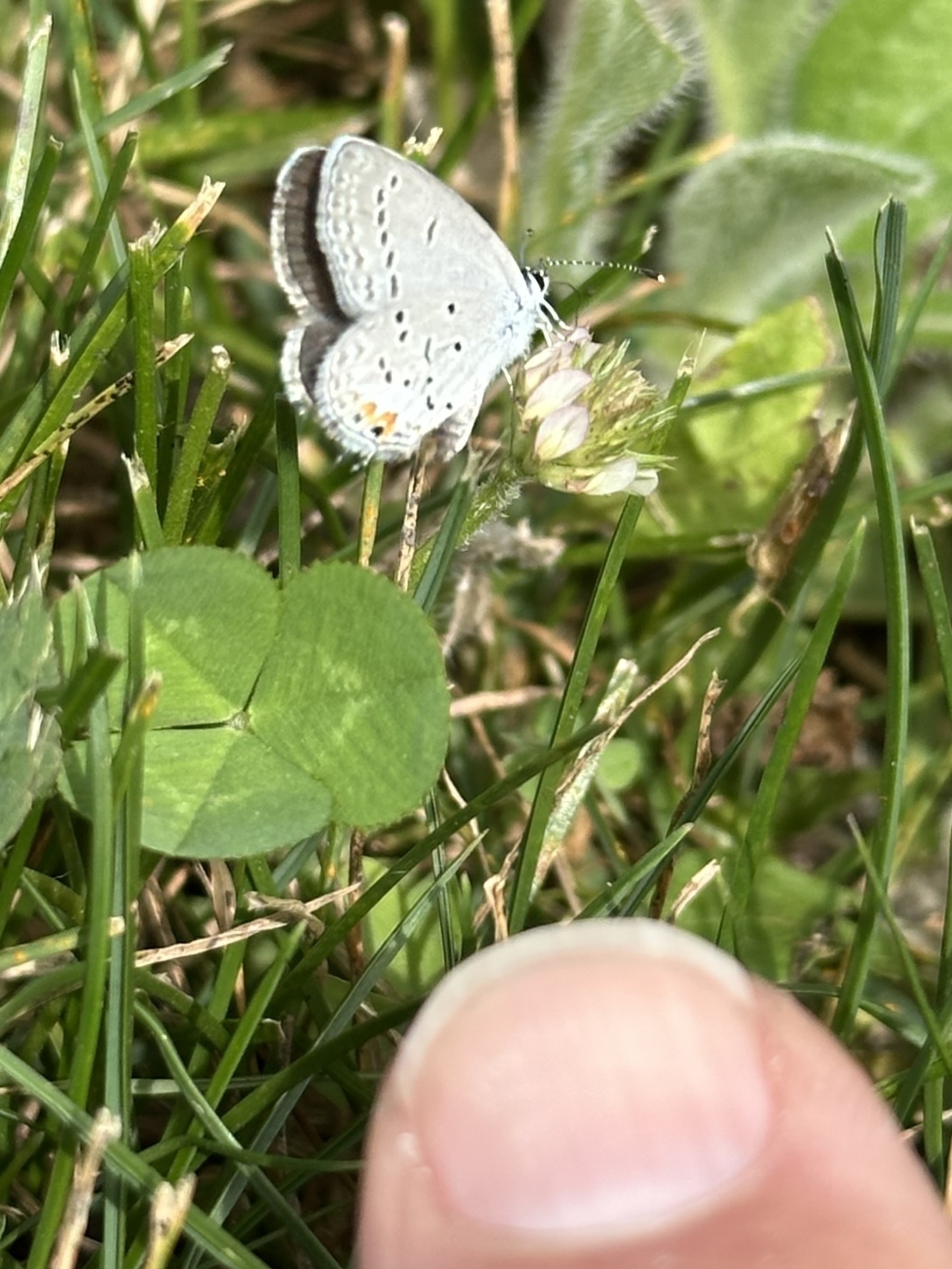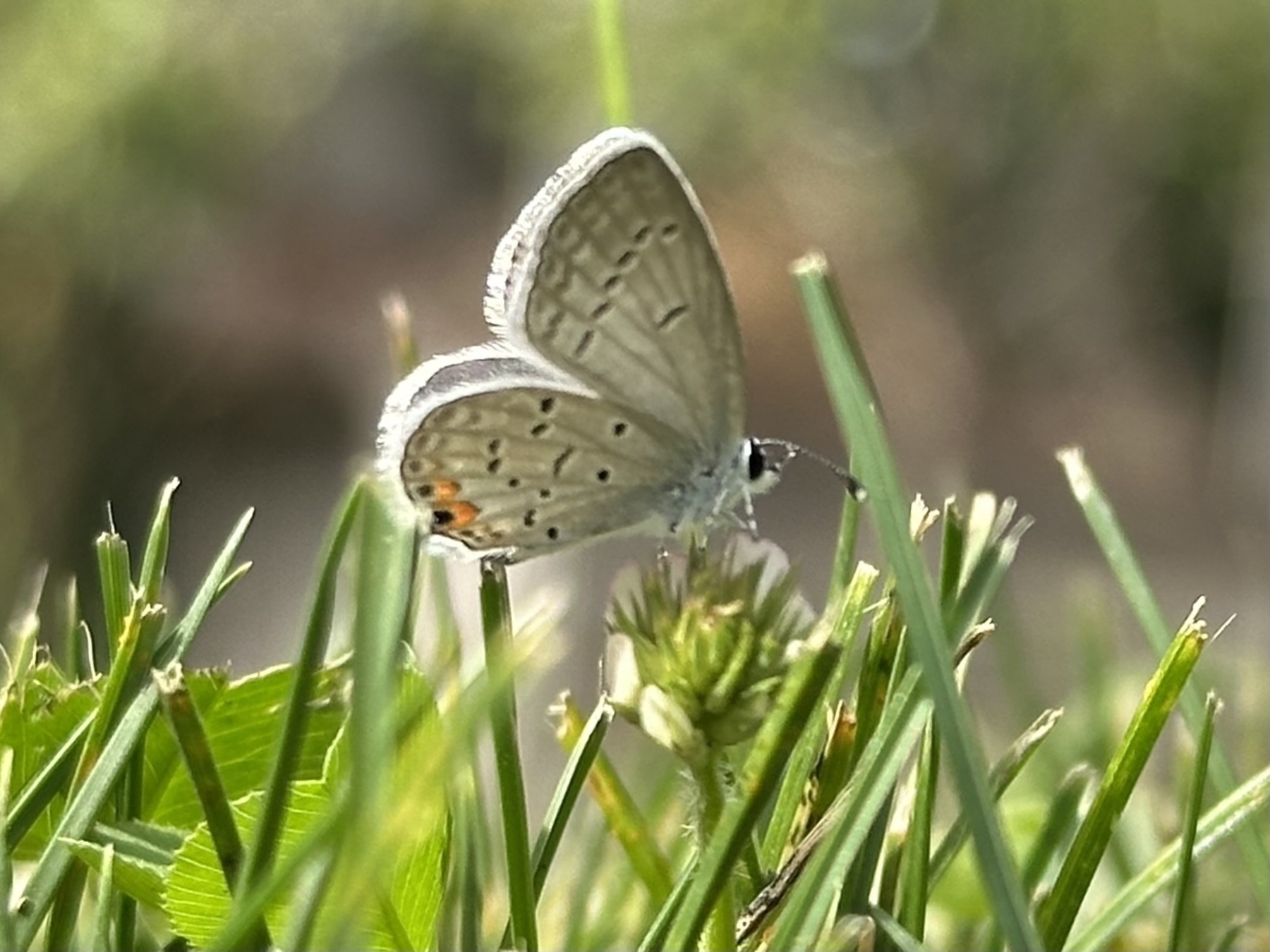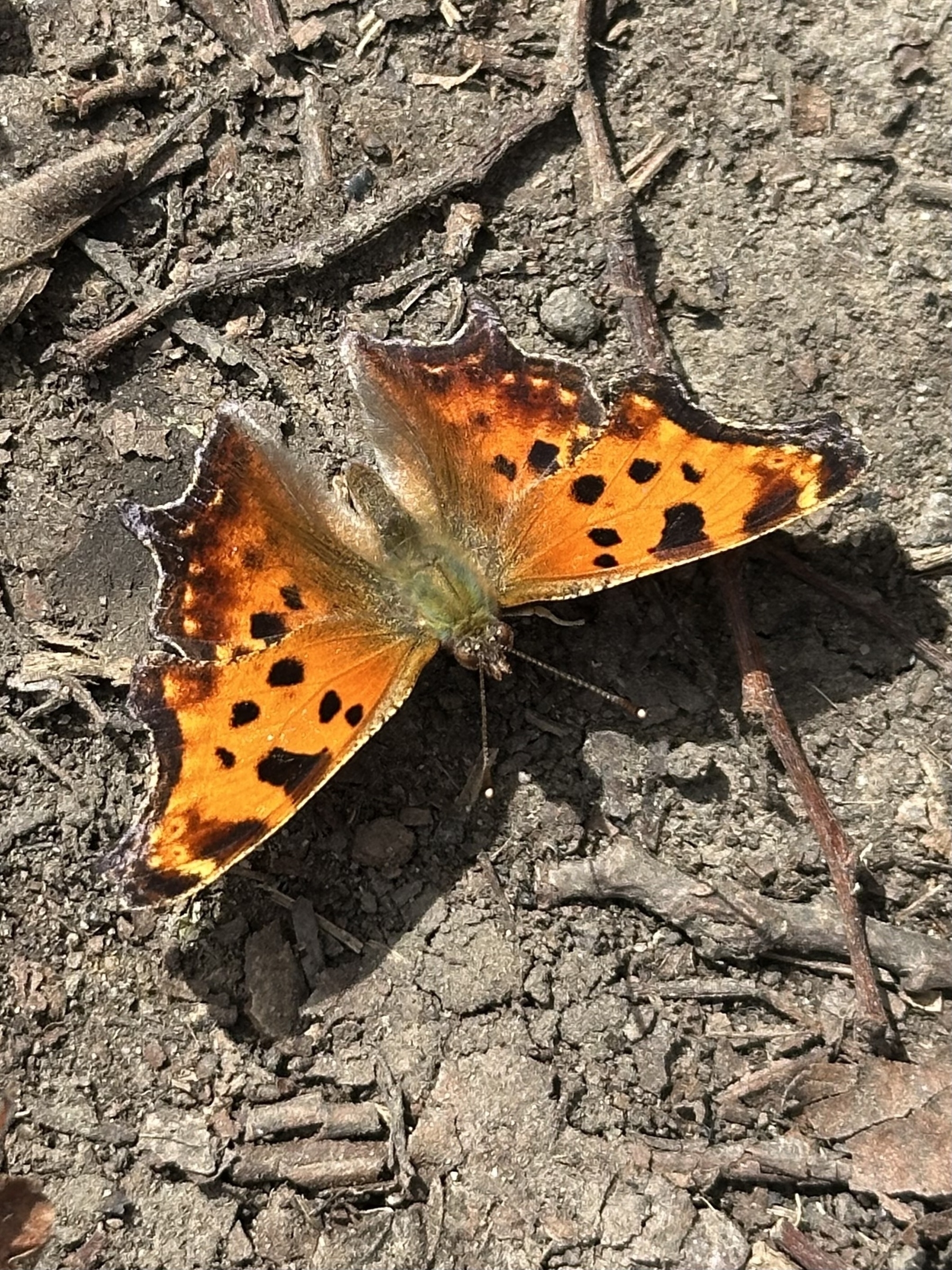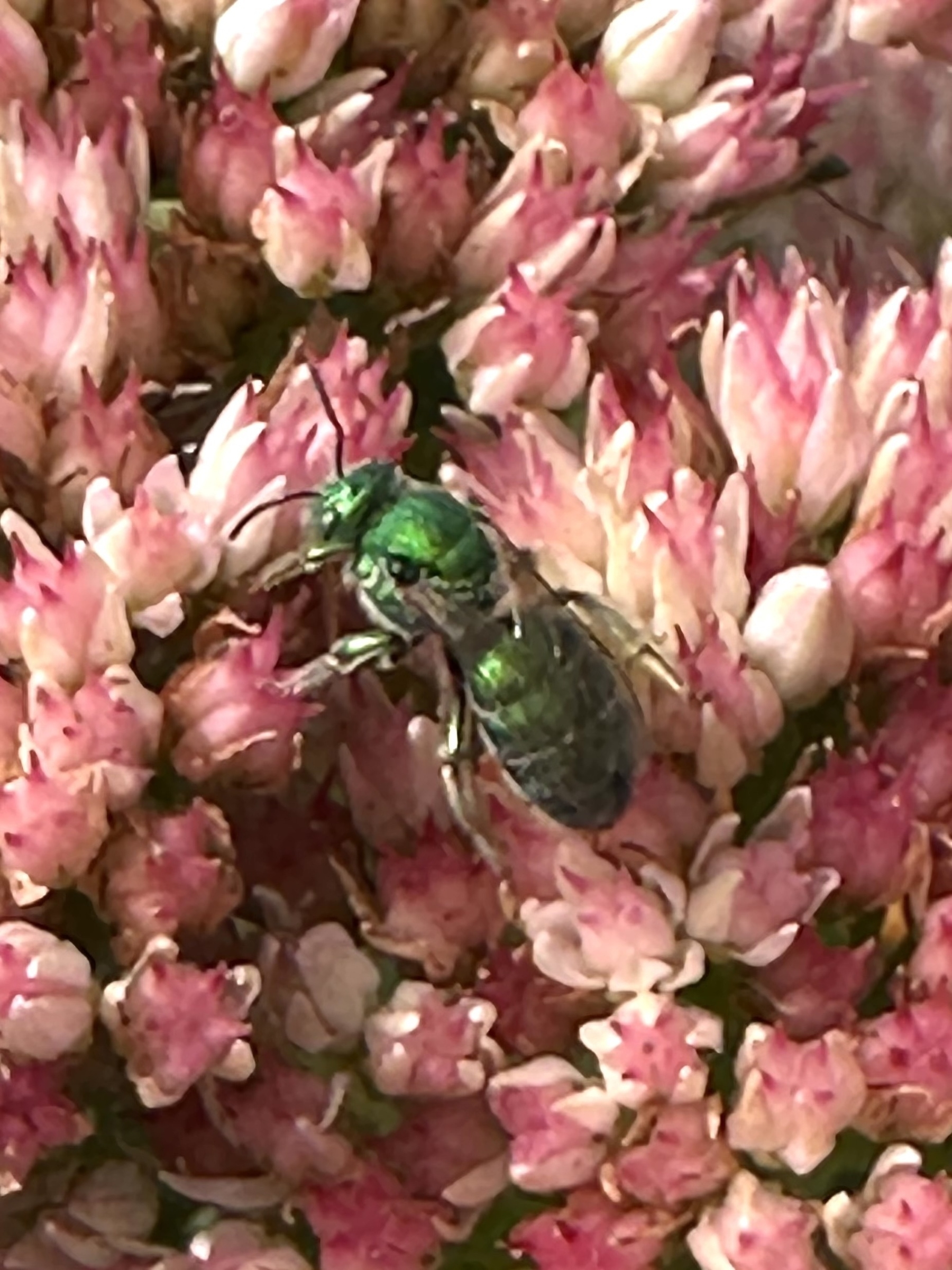Today’s Insects 🦋🐝
A few more insects from this morning’s run at the state park and from my quick perusal of my gardens.
An Eastern Tailed Blue, (cupido comyntas) one of the Lycaenid butterflies, is about the size of my fingernail, or about 1cm in length. I see more lycaenids where clover grows, fewer where lawns are poisoned to make them uniform with non-native golf course grass. They’re among my favorite insects. I included two photos of the same butterfly to give a sense of scale in comparison with my fingernail, and also to show the differences of coloration between the ventral and dorsal sides of the wing.
An Eastern Comma butterfly, (Polygonia comma), one of the Nymphalidae. I don’t see many of them except at this time of year, and even then I only see a few at this latitude, though I’ve seen more, and more of their near relatives, further north. Today I saw surprisingly many.
An Augochloropsis, or metallic green sweat bee, one of the halictidae. These are solitary bees, as are most of the roughly 4000 species of bees native to North America. Most bees want nothing to do with us and will fly away if you approach to take a photo. These are considerably smaller than honeybees, roughly 1cm long. Despite their bright metallic green coloration, they hide in plain sight and are easy to miss.



